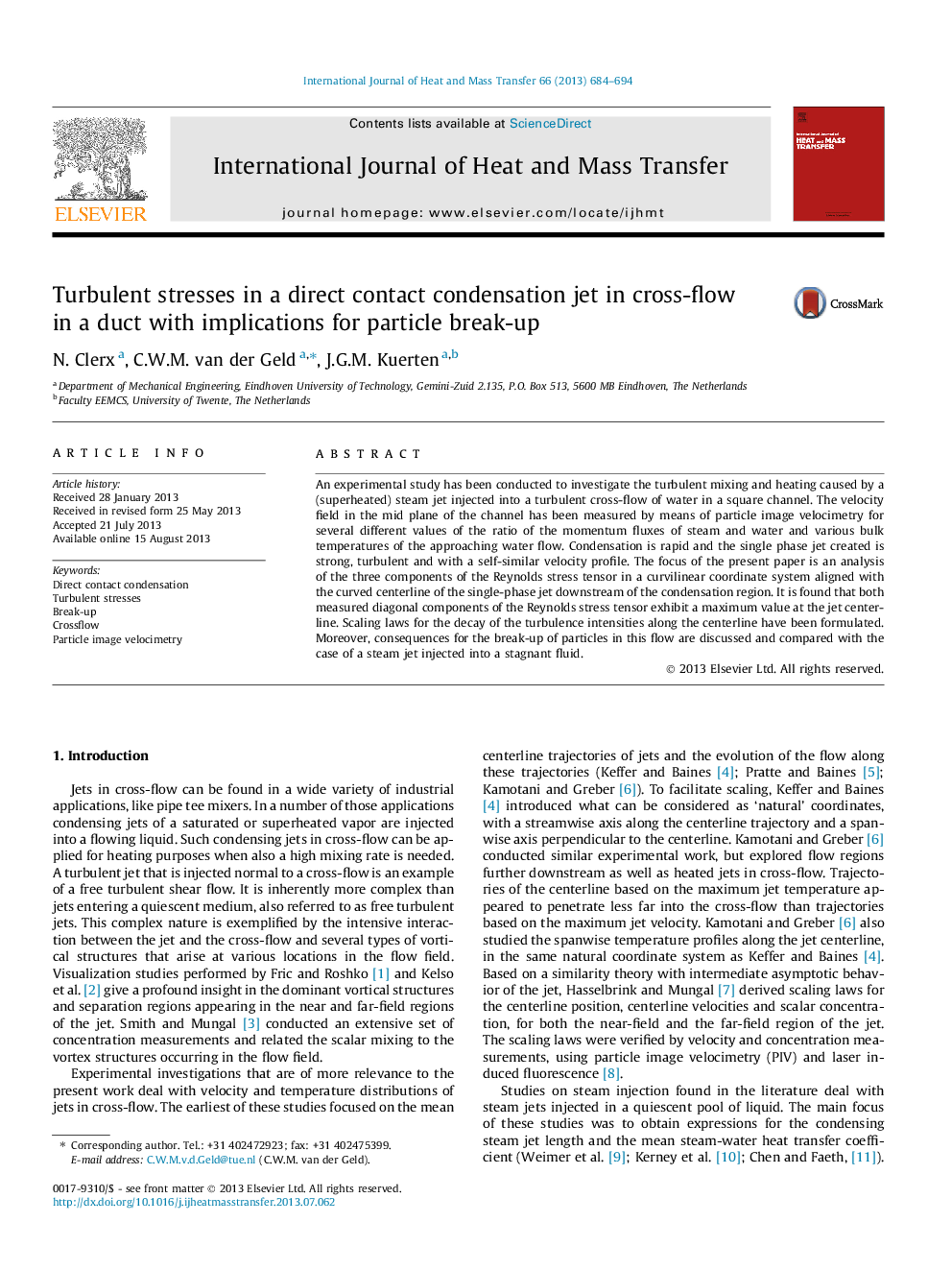| Article ID | Journal | Published Year | Pages | File Type |
|---|---|---|---|---|
| 7058167 | International Journal of Heat and Mass Transfer | 2013 | 11 Pages |
Abstract
An experimental study has been conducted to investigate the turbulent mixing and heating caused by a (superheated) steam jet injected into a turbulent cross-flow of water in a square channel. The velocity field in the mid plane of the channel has been measured by means of particle image velocimetry for several different values of the ratio of the momentum fluxes of steam and water and various bulk temperatures of the approaching water flow. Condensation is rapid and the single phase jet created is strong, turbulent and with a self-similar velocity profile. The focus of the present paper is an analysis of the three components of the Reynolds stress tensor in a curvilinear coordinate system aligned with the curved centerline of the single-phase jet downstream of the condensation region. It is found that both measured diagonal components of the Reynolds stress tensor exhibit a maximum value at the jet centerline. Scaling laws for the decay of the turbulence intensities along the centerline have been formulated. Moreover, consequences for the break-up of particles in this flow are discussed and compared with the case of a steam jet injected into a stagnant fluid.
Related Topics
Physical Sciences and Engineering
Chemical Engineering
Fluid Flow and Transfer Processes
Authors
N. Clerx, C.W.M. van der Geld, J.G.M. Kuerten,
